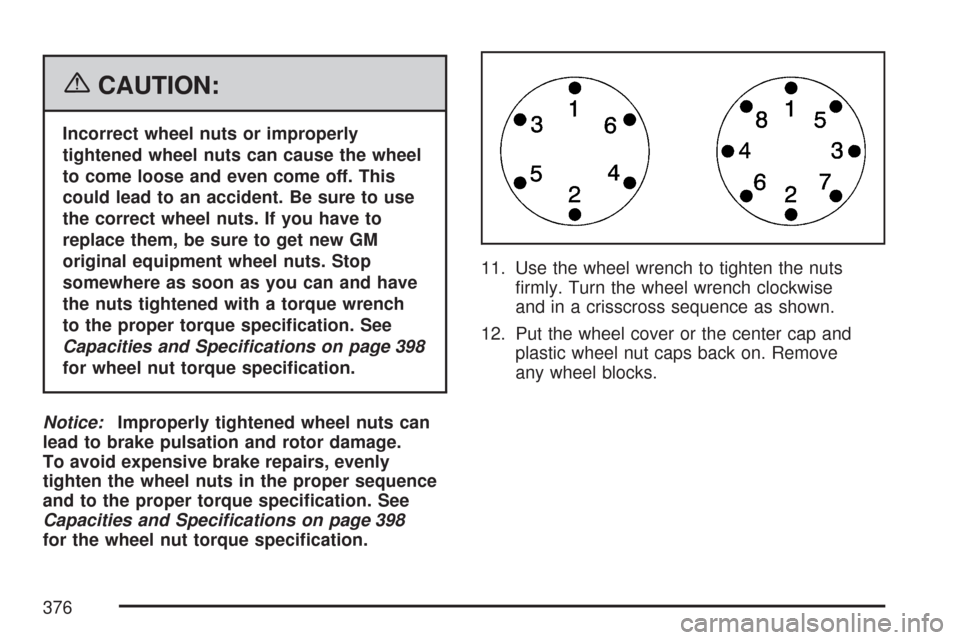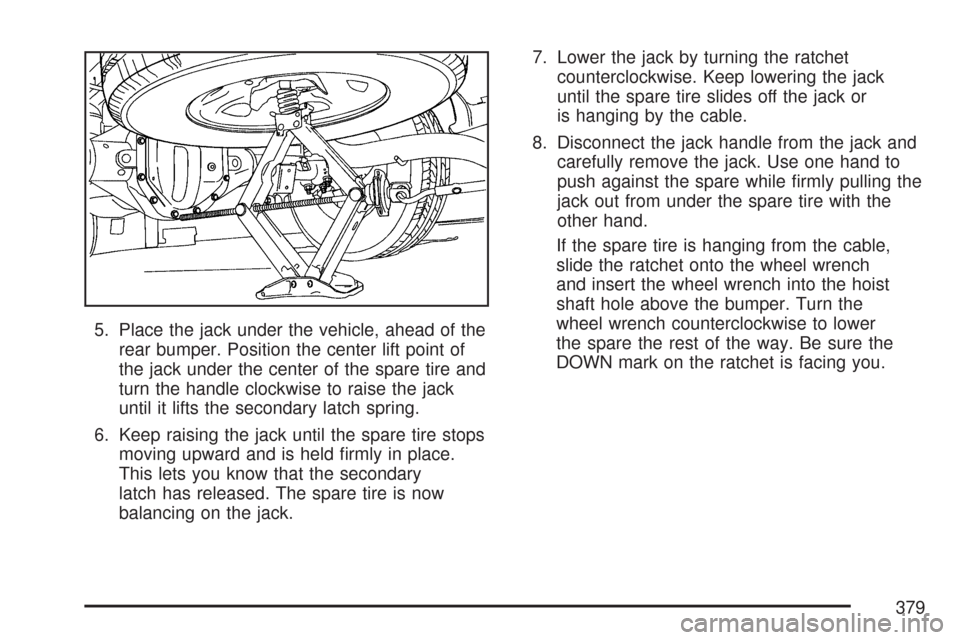Page 367 of 458
When your vehicle has a flat tire, use the following
example as a guide to assist you in the placement
of wheel blocks.
The following information will tell you next how to
use the jack and change a tire.Removing the Spare Tire and Tools
If you have a cargo van or a passenger van,
the equipment you will need is located in
the passenger side rear corner of the vehicle.
Remove the retaining
wing bolt and lift it off of
the mounting bracket.
If you have a van with the 15-passenger seating
arrangement, the equipment you will need is
secured on the rear floor of the passenger side
of the vehicle.
367
Page 368 of 458
To access the equipment, remove the retaining
wing bolt and lift it out of the mounting bracket.The tools you will be using include the jack (A),
jack handle extension (B), jack handle (C),
wheel wrench (D), and the ratchet (E).
The spare tire is stored underneath the rear of
your vehicle. You will use the wheel wrench (D)
and the ratchet (E) to lower the spare tire from
the vehicle.
368
Page 369 of 458
To lower the spare tire from the vehicle:
1. Attach the wheel
wrench and ratchet,
with the DOWN side
facing you. The
wheel wrench has a
socket end and a flat
chisel end. Note that
there is an UP side
and a DOWN side on
the ratchet.
2. Put the flat chisel end of the wheel wrench
on an angle through the hole between the
body and the bumper. Be sure the flat
end connects into the hoist shaft.3. Turn the ratchet counterclockwise to lower the
spare tire to the ground. If the spare tire does
not lower to the ground, the secondary
latch is engaged causing the tire not to lower.
SeeSecondary Latch System on page 377.
369
Page 370 of 458
4. When the tire has been lowered, pull the tire
toward you so you can reach the tire retainer
and pull it up through the wheel opening.
If you have a vehicle which was completed from
a cab and chassis, refer to the information from
the body supplier/installer.
The spare tire is a full-size tire, like the other tires
on your vehicle.
Removing the Flat Tire and
Installing the Spare Tire
If your vehicle has plastic wheel nut caps,
loosen them by turning the wheel wrench
counterclockwise. The wheel nut caps are
designed to remain with the center cap.
Remove the center cap.
If the wheel has a smooth center piece, place
the chisel end of the wheel wrench in the slot
on the wheel and gently pry it out.
1. Do a safety check before proceeding.
SeeChanging a Flat Tire on page 366
for more information.
2. With the DOWN side facing you, use the
ratchet and wheel wrench to loosen all the
wheel nuts. Do not remove them yet.
370
Page 374 of 458
6. Remove all the
wheel nuts.
7. Take flat tire off of the mounting surface.
{CAUTION:
Rust or dirt on the wheel, or on the parts
to which it is fastened, can make the
wheel nuts become loose after time.
The wheel could come off and cause an
accident. When changing a wheel, remove
any rust or dirt from the places where
the wheel attaches to the vehicle. In an
emergency, a cloth or a paper towel can
be used to do this; but be sure to use a
scraper or wire brush later, if needed,
to get all the rust or dirt off.
374
Page 375 of 458
8. Remove any rust or
dirt from the wheel
bolts, mounting
surfaces and
spare wheel.
{CAUTION:
Never use oil or grease on studs or nuts.
Because the nuts might come loose.
The vehicle’s wheel could fall off, causing
a serious accident.9. Put the wheel nuts
back on with the
rounded end of
the nuts toward
the wheel. Tighten
each wheel nut
by hand until
the wheel is held
against the hub.
10. Lower the vehicle by turning the jack handle
counterclockwise. Lower the jack completely.
375
Page 376 of 458

{CAUTION:
Incorrect wheel nuts or improperly
tightened wheel nuts can cause the wheel
to come loose and even come off. This
could lead to an accident. Be sure to use
the correct wheel nuts. If you have to
replace them, be sure to get new GM
original equipment wheel nuts. Stop
somewhere as soon as you can and have
the nuts tightened with a torque wrench
to the proper torque speci�cation. See
Capacities and Specifications on page 398
for wheel nut torque speci�cation.
Notice:Improperly tightened wheel nuts can
lead to brake pulsation and rotor damage.
To avoid expensive brake repairs, evenly
tighten the wheel nuts in the proper sequence
and to the proper torque speci�cation. See
Capacities and Specifications on page 398
for the wheel nut torque speci�cation.11. Use the wheel wrench to tighten the nuts
firmly. Turn the wheel wrench clockwise
and in a crisscross sequence as shown.
12. Put the wheel cover or the center cap and
plastic wheel nut caps back on. Remove
any wheel blocks.
376
Page 379 of 458

5. Place the jack under the vehicle, ahead of the
rear bumper. Position the center lift point of
the jack under the center of the spare tire and
turn the handle clockwise to raise the jack
until it lifts the secondary latch spring.
6. Keep raising the jack until the spare tire stops
moving upward and is held firmly in place.
This lets you know that the secondary
latch has released. The spare tire is now
balancing on the jack.7. Lower the jack by turning the ratchet
counterclockwise. Keep lowering the jack
until the spare tire slides off the jack or
is hanging by the cable.
8. Disconnect the jack handle from the jack and
carefully remove the jack. Use one hand to
push against the spare while firmly pulling the
jack out from under the spare tire with the
other hand.
If the spare tire is hanging from the cable,
slide the ratchet onto the wheel wrench
and insert the wheel wrench into the hoist
shaft hole above the bumper. Turn the
wheel wrench counterclockwise to lower
the spare the rest of the way. Be sure the
DOWN mark on the ratchet is facing you.
379